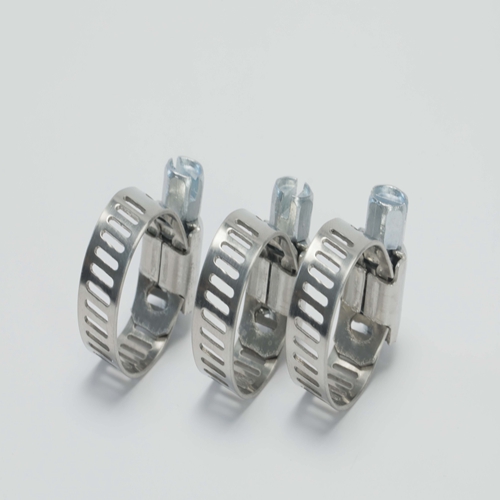- Phone:+86-17331948172 +86-0319-8862898
- E-mail: inquiry@puxingclamp.com
Aug . 03, 2024 00:50 Back to list
3D Printed Hose Clamps Custom Solutions for Industrial Applications and Efficient Manufacturing Processes
The Rise of 3D Printing in Hose Clamp Manufacturing
In recent years, the manufacturing landscape has witnessed a transformative shift, thanks in no small part to the advent of 3D printing technology. Among various applications, the production of hose clamps has emerged as a notable example of how 3D printing is revolutionizing traditional manufacturing processes. Hose clamps, essential components in a variety of industries including automotive, plumbing, and aerospace, are designed to secure hoses onto fittings, preventing leakages and ensuring operational efficiency. The integration of 3D printing in the production of these critical components is enhancing customization, reducing lead times, and increasing cost-efficiency.
Customization and Design Flexibility
One of the most significant advantages of 3D printing in hose clamp manufacturing is the unparalleled level of customization it offers. Traditional manufacturing methods often involve rigid tooling and molds that limit the variety and complexity of designs. In contrast, 3D printing allows engineers and designers to create hose clamps tailored to specific applications. For instance, if a particular size or shape is required for unique machinery or vehicles, 3D printing facilitates the rapid production of prototypes or end-use parts without the need for costly retooling. This capability not only streamlines the design process but also encourages innovation, as designers can easily experiment with alternative designs and materials.
Reduced Lead Times
Traditionally, the manufacturing process for hose clamps can be time-consuming, often involving multiple steps from prototyping to production, which might take weeks or even months to complete. 3D printing significantly reduces these lead times by allowing for simultaneous production, where multiple designs can be printed in a single run. Additionally, the ability to produce parts on demand means that manufacturers can quickly respond to customer needs or market changes without the burden of excess inventory. This agility is particularly beneficial in industries where the demand for specific truck or equipment parts fluctuates.
Cost-Effectiveness
hose clamp 3d print factory

While the initial investment in 3D printing technology may be substantial, the long-term cost savings are undeniable. With reduced material waste—since 3D printing is an additive process—companies can minimize their expenditure on raw materials. Furthermore, the elimination of the need for extensive tooling and mold creation translates to a decrease in upfront costs associated with traditional manufacturing methods. This makes 3D printing a more viable option for small to medium-sized businesses that seek to enter or innovate within the hose clamp market.
Material Versatility
3D printing technology allows for the use of a wide range of materials, including plastics, metals, and composites. This flexibility opens the door to designing hose clamps that are not only functional but also capable of withstanding varying environmental conditions. For example, clamps designed for the automotive industry may need to endure high temperatures and corrosive substances, while those used in medical equipment might focus on biocompatibility. The versatility afforded by 3D printing ensures that manufacturers can meet these diverse demands without compromising on quality or performance.
Sustainability
Another important aspect of 3D printing is its potential for promoting sustainability in manufacturing. By using materials more efficiently and enabling localized production, 3D printing reduces the carbon footprint often associated with transporting goods over long distances. As companies increasingly prioritize eco-friendly practices, the shift towards 3D printing in hose clamp manufacturing aligns with broader sustainability goals, allowing for a greener approach to production.
Conclusion
In conclusion, the integration of 3D printing technology in hose clamp manufacturing is paving the way for a new era in industrial production. With enhanced customization, reduced lead times, cost-effectiveness, material versatility, and a commitment to sustainability, 3D printing is not just a passing trend but a fundamental shift in how products are designed and manufactured. As technology continues to evolve, the future of hose clamp production—along with countless other applications—looks poised for significant transformation, ensuring that industries can meet the challenges of the modern world with innovative solutions.
-
Large Stainless Steel Adjustable American Type Hose Clamp - Hebei Pux Alloy Technology Co., Ltd|Corrosion Resistance&High Breaking Torque
NewsJul.30,2025
-
Large Stainless Steel Adjustable American Type Hose Clamp - Hebei Pux Alloy Technology Co., Ltd
NewsJul.30,2025
-
Large Stainless Steel Adjustable American Type Hose Clamp - Hebei Pux Alloy Technology Co., Ltd|Corrosion Resistance&Industrial Applications
NewsJul.30,2025
-
Large Stainless Steel Adjustable American Type Hose Clamp-Hebei Pux Alloy Technology Co., Ltd|Corrosion Resistance, Adjustable Design
NewsJul.30,2025
-
Large Stainless Steel Adjustable American Type Hose Clamp - Hebei Pux Alloy Technology Co., Ltd. | High Breaking Torque & Corrosion Resistance
NewsJul.30,2025
-
Large Stainless Steel Adjustable American Type Hose Clamp - Hebei Pux Alloy Technology Co., Ltd
NewsJul.30,2025




